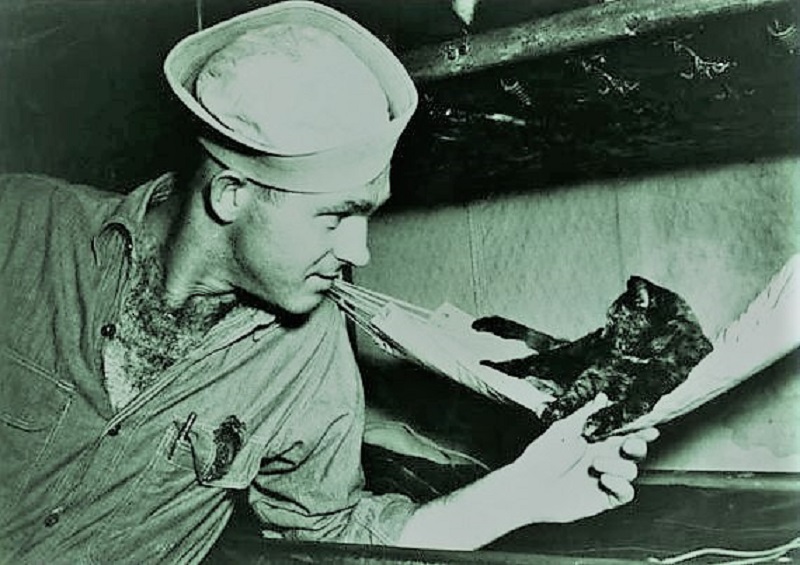
Honestly, I am not a cat person. I have always preferred dogs. There is an expression, “A dog thinks you are God, a cat thinks he is.”
I knew about the efforts of dogs, horses, elephants, and other animals during World War II, but never heard about the heroics of cats during World War II, one of my blog followers pointed it out to me (thanks, Parker).
A stray cat wandered into St Augustine’s and St Faith’s Church in London in 1936. She was named Faith and adopted by the rector and parishioners. She would sit at the pulpit while Father Henry Ross preached. In 1940, Faith gave birth to a single kitten named Panda. On 6 September, Faith demanded access to the church basement. When a door was opened for her, she carried her kitten down to the dark cellar. Father Ross retrieved the kitten twice, but Faith carried him back downstairs—twice. She even missed a church service, which was unusual. The next day, air raids began in the Battle of London, and by the 9th, 400 people had been killed, and eight churches were destroyed by bombs. Father Ross returned to the church to find it ruined. He called for Faith and heard faint meowing in return. He retrieved Faith and Panda from the rubble just before the roof collapsed. Faith was nominated for a Dinkin Medal, which she was not eligible for as a civilian, but awarded a special medal for bravery anyway. Faith was presented special ceremony in 1945 attended by the Archbishop of Canterbury. When Faith died peacefully at age 14, the church was again packed for her funeral.

Cats were often adopted along the way by soldiers and sailors who found an abandoned cat or kitten and were used as mascots.

Cats were also thought to be able to detect bombs ahead of time, like dogs sniffing out explosives. Soldiers theorized it was due to cats being attuned to atmospheric pressure or possibly just their sixth sense. During World War II, some families would rely on their cats to sense and alert them ahead of a bomb being dropped and would retreat for safety to air-raid or bomb shelters.
The most famous of these fearless felines was aptly named Bomber. He could identify the difference between German aircraft and the planes of the British Air Force.

There is no secret that cats are adept hunters. This was the original reason the military had requested feline aid. Cats were first brought aboard ships to protect the food supplies. With mice, rats, and other vermin vying for the opportunity to nibble away at the food rations—and leaving their disease-carrying droppings behind—cats were the perfect companion on Naval vessels and in soldier camps.
The cats kept the vermin populations at bay and, by extension, held the soldiers nourished and healthy. Thankfully, the cat hero battalions were happy to do the job in exchange for the endless supply of squeaky snacks.

In the above photograph, Marine Cpl. Edward Burckhardt found a kitten at the base of Mount Suribachi, Iwo Jima. This was the same scene as some brutal fighting of the war.
Sources
https://time.com/5396568/simon-cat-war-medal/
https://ontariospca.ca/blog/the-incredible-accomplishments-of-cats-during-war/

Donation
I am passionate about my site and I know you all like reading my blogs. I have been doing this at no cost and will continue to do so. All I ask is for a voluntary donation of $2, however if you are not in a position to do so I can fully understand, maybe next time then. Thank you. To donate click on the credit/debit card icon of the card you will use. If you want to donate more then $2 just add a higher number in the box left from the PayPal link. Many thanks.
$2.00

As a cat lover, this is heartening.
LikeLike
Reblogged this on History of Sorts.
LikeLike